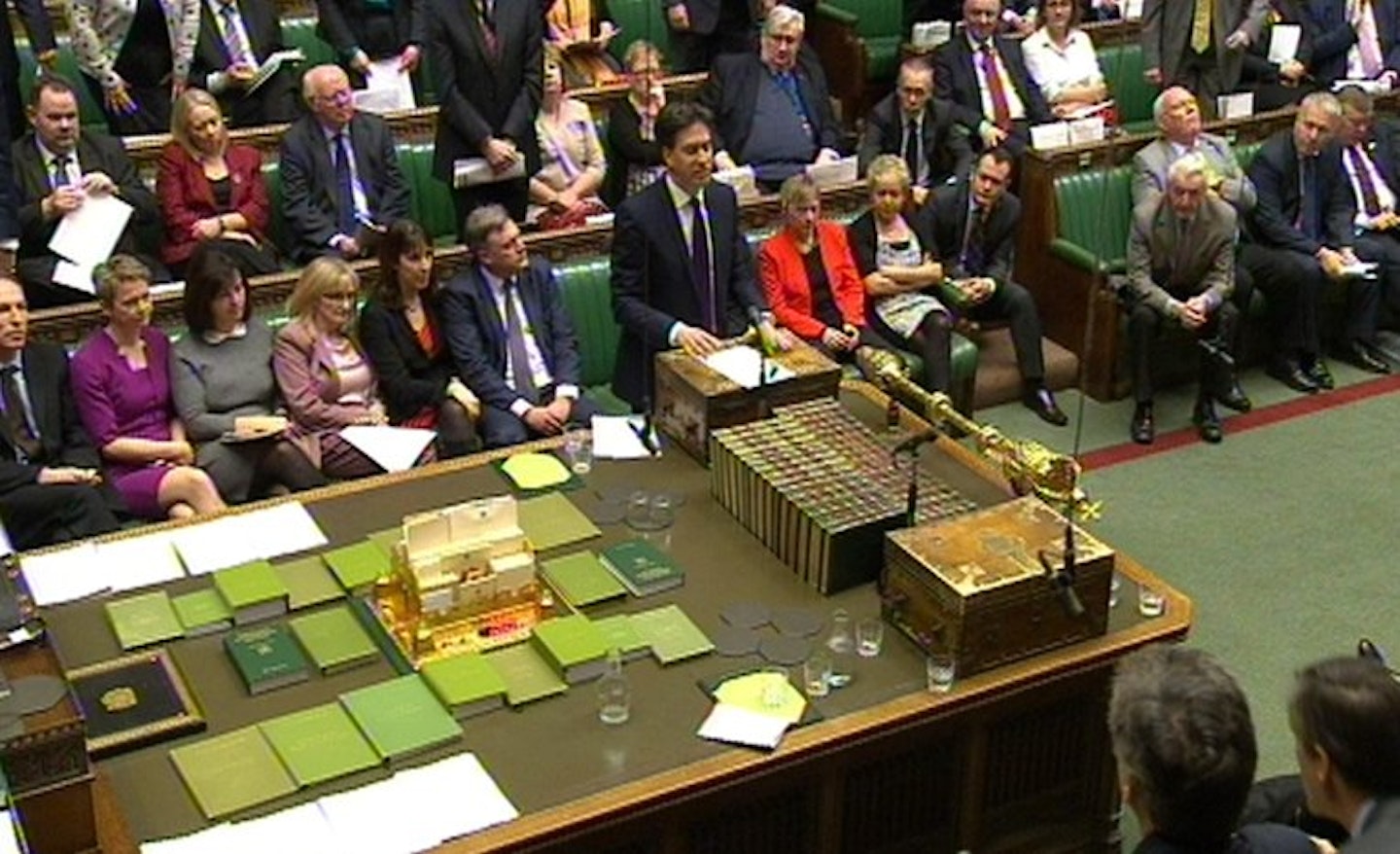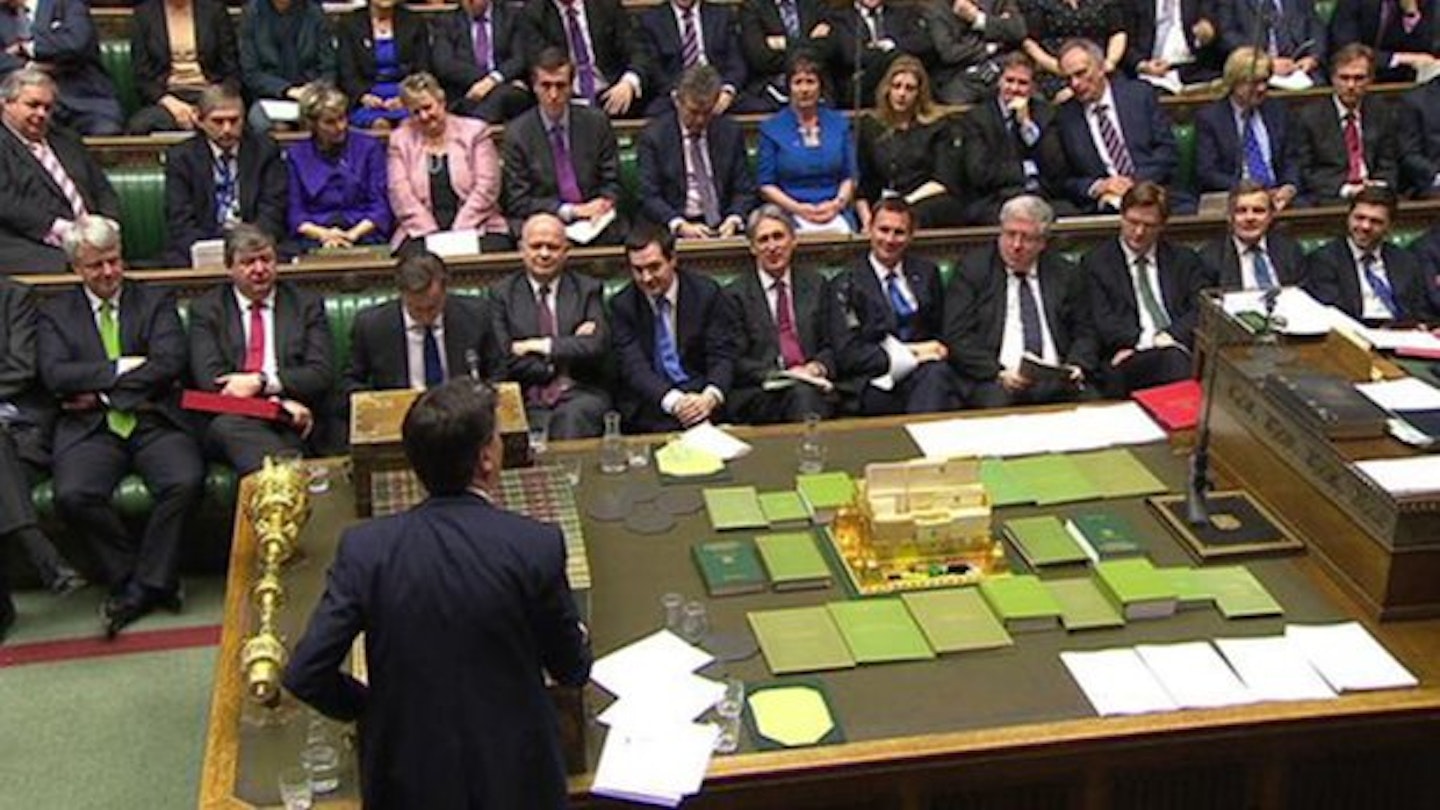This was the exact moment yesterday that a Labour Party press officer gave him/herself a high five and did a little victory dance in the toilets. The Prime Minister served Ed Miliband Prime Minister’s Question Time on a plate, by rocking up with an entirely male front bench. (Home Secretary Theresa May is really wishing she’d chosen a different day to bunk off school now).
It was particularly bad timing for Cameron, who’s having a difficult week with the fairer sex. Women, eh? Of the only two female MPs actually in view behind him, one of them, Anne McIntosh, had just been deselected from her constituency in Thirsk and Malton by the local party. (Apparently local party officials referred to her as ‘bad mannered’ and a ‘silly girl.’ She is 59.) Education Secretary Michael Gove has also just been accused of sexism after he fired longstanding OFSTED chief Sally Morgan (incidentally also a Labour peer).

As well as providing an excellent photo opportunity for the Labour Party, yesterday’s PMQs also gave Miliband the chance to revisit the accusation that Cameron is running the Conservative Party – and by extension the Government – like an old boy’s network. To an extent, he’s right – the Conservatives don’t have a great track record when it comes to recruiting female MPs. Of the 256 Tory MPs right now, just 48 (19%) are women. In contrast, of Labour’s 169 MPs, 86 are women – that’s almost 51%.
However, before Ed Miliband starts crowing too loudly, this isn’t a Tory party problem, it’s an institutional one. By international standards, our levels of female representation in Parliament are woefully low – at just 22.5% we are joint 59th with Israel. Sudan, Iraq, Afghanistan and Zimbabwe all have a higher proportion of female MPs than we do – although we’re beating Iran, so that’s something.
Is it really that surprising though? Male members of parliament are still expressing disquiet at the sight of heavily pregnant female MPs in the chamber (the only difference between now and 20 years ago is that they’re now tweeting about it). At the beginning of this year a slew of female MPs (all Tory, FYI) resigned, amidst speculation that the family un-friendly hours in parliament are putting women off (incidentally, despite senior MPs making a huge song and dance about taking paternity leave at the first possible opportunity, how are female MPs actually supposed to take maternity leave when there's no-one else available to deal with consituency business?).
Flexi-time and remote working might sound like anathemas to the middle-aged, middle-class male MPs who've never had to think about work/life balance or childcare in their lives, but we’re taking our inspiration right now from Licia Ronzulli, the Italian MEP who has famously brought her daughter in to work on numerous occasions since she was born in 2010 (including debates and voting sessions). Maybe David Cameron et al should do the same.
Follow Rebecca on Twitter @rebecca_hol
Picture: PA
This article originally appeared on The Debrief.
